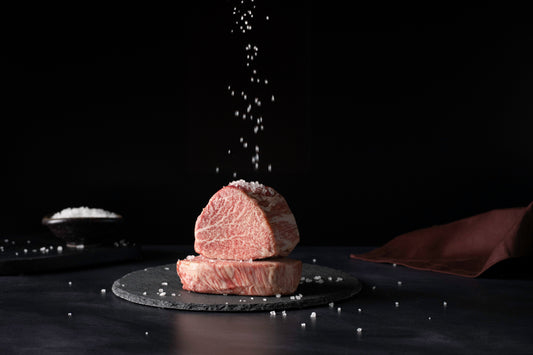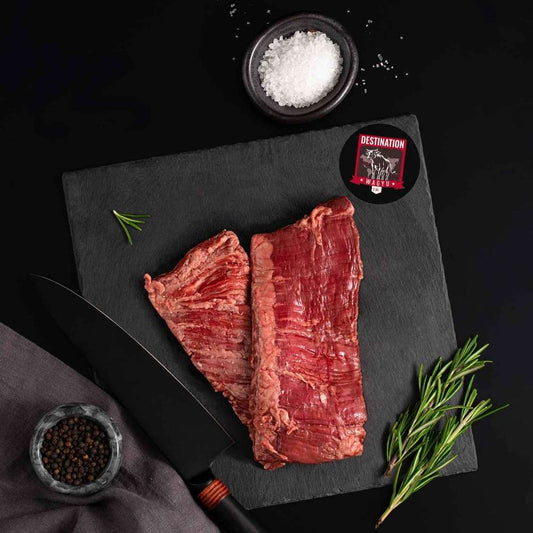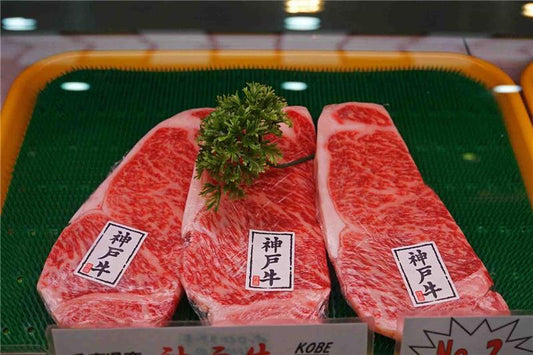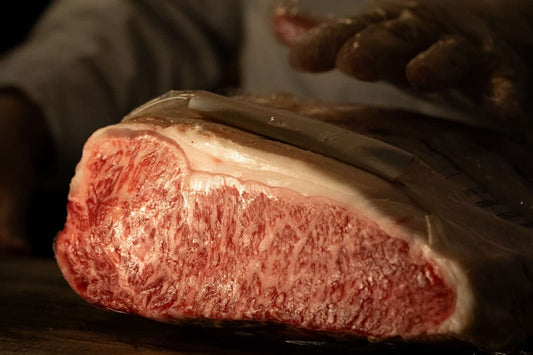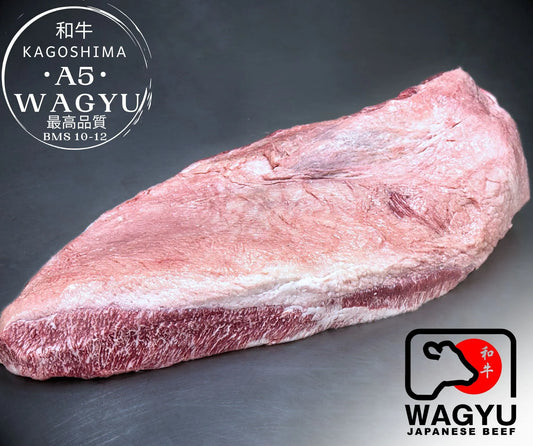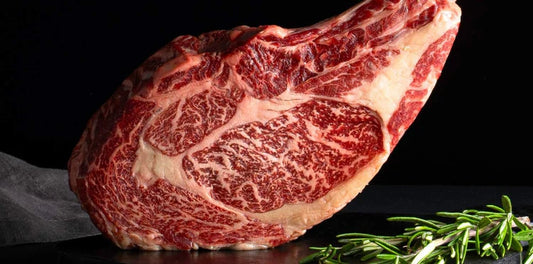Cooking Wagyu brisket is an intricate dance between tradition and precision, requiring a deep appreciation for its unique qualities. Unlike standard brisket cuts, Wagyu brisket elevates the culinary experience with its remarkable marbling, tenderness, and complex flavor. For professional chefs and pitmasters, working with Wagyu brisket is an opportunity to showcase mastery while respecting the integrity of this luxurious beef. This guide explores advanced techniques, professional insights, and nuanced approaches tailored for those who seek to go beyond conventional methods. Whether you’re serving a high-end clientele or perfecting your craft, these insights will empower you to bring out the best in Wagyu brisket.
What Makes Wagyu Brisket Special
Composition and Marbling
At the heart of Wagyu brisket’s allure is its exceptional marbling. Unlike conventional brisket, where fat sits primarily on the exterior, Wagyu’s signature intramuscular fat (IMF) weaves through the muscle fibers, creating a texture and flavor profile unmatched by other beef. This marbling, when rendered properly, creates a buttery tenderness that melts on the palate. However, this richness is a double-edged sword. If over-rendered, the fat can overwhelm the meat, resulting in a greasy mouthfeel. It’s a delicate balance: the chef must guide the transformation of fat into flavor without compromising the structural integrity of the meat. This understanding is what separates a good Wagyu brisket from a truly extraordinary one.
Sourcing and Genetics
Sourcing the right Wagyu brisket is as critical as the cooking process itself. Japanese Wagyu, known for its ultra-high marbling and specific breeding techniques, remains the gold standard. Varieties like Miyazaki, Kobe, and Omi Wagyu are revered for their consistent quality and complexity. American Wagyu, often a cross between Japanese Wagyu and Angus cattle, offers larger briskets with slightly firmer textures, making it a versatile choice for barbecue and smoking enthusiasts. Grading systems like the Japanese A5 scale or the American BMS (Beef Marbling Scale) help professionals identify the quality of the cut. An A5 Wagyu brisket, with its unparalleled marbling, is ideal for chefs who aim to highlight the fat’s creamy sweetness, while a BMS 8-9 cut offers a balance of richness and adaptability for various cooking methods.
Flavor Profile and Texture
The flavor of Wagyu brisket is distinctly umami-forward, with a subtle sweetness that lingers on the palate. The high-fat content contributes to its creamy, almost silken texture, offering a completely different eating experience compared to traditional brisket. That said, this richness demands careful pairing and preparation to avoid overwhelming the diner. The natural tenderness of Wagyu brisket can also make it more prone to overcooking, as it requires less time to break down connective tissue. Mastering these nuances ensures that every bite of Wagyu brisket is a harmonious blend of flavor, texture, and technique.
Preparation: Setting the Stage for Success
Trimming: The Fine Art
Trimming Wagyu brisket is a meticulous process that sets the foundation for even cooking. Unlike traditional brisket, which often benefits from aggressive trimming to manage external fat, Wagyu brisket demands a more delicate approach. The goal is to retain enough fat to insulate the meat during cooking while ensuring it doesn’t dominate the flavor. For the flat, leave a quarter-inch layer of fat to protect the leaner muscle, while the point, being naturally fattier, can handle a slightly thicker layer. Precision is key here; use a sharp boning knife and make deliberate, clean cuts to avoid tearing the meat or exposing too much muscle. Remember, Wagyu’s marbling means some internal fat will render during cooking, so the external fat serves more as a barrier than a primary flavor source.
Aging for Flavor
Aging is a powerful tool for enhancing Wagyu brisket’s natural flavors, and it’s an essential step for chefs seeking to elevate the cut. Dry-aging, often regarded as the gold standard, intensifies the beef’s umami profile while breaking down muscle fibers for additional tenderness. For brisket, a dry-aging period of 21 to 28 days strikes the perfect balance, enhancing flavor without over-concentrating richness. However, dry-aging requires controlled conditions and specialized equipment, making it less accessible for some kitchens. Wet-aging, on the other hand, involves vacuum-sealing the brisket and refrigerating it for up to two weeks. While it doesn’t deliver the same depth of flavor as dry-aging, it helps tenderize the meat and retain moisture, making it a practical choice for larger-scale operations.
Seasoning: Striking the Right Balance
Seasoning Wagyu brisket is an exercise in restraint. The inherent richness of the beef demands a light touch to avoid masking its natural flavors. A simple rub of kosher salt and freshly cracked black pepper is often sufficient to enhance the brisket’s umami without overpowering it. However, for those looking to add a layer of complexity, consider subtle additions like garlic powder, smoked paprika, or ground coffee. These ingredients provide depth without competing with the Wagyu’s buttery sweetness. Allow the seasoning to rest on the brisket for at least 12 hours before cooking. This dry brining process not only enhances flavor penetration but also aids in forming a well-textured bark during smoking.
Cooking Techniques: Mastering the Art
Low and Slow Smoking
Smoking Wagyu brisket is a time-honored technique that allows its rich fat to render slowly while infusing the meat with smoky undertones. Maintaining a consistent smoker temperature of 225°F to 250°F is critical to achieving the ideal balance between rendering fat and preserving moisture. I prefer fruitwoods like cherry and apple for their gentle sweetness, complemented by oak to add depth. As the brisket approaches an internal temperature of 160°F, it will hit the stall—a plateau where moisture evaporation cools the meat, halting temperature increase. Wrapping the brisket in butcher paper at this stage retains moisture without steaming, preserving the integrity of the bark. Smoking Wagyu brisket is an exercise in patience and precision, with the reward being a perfectly tender, smoky masterpiece.
Sous Vide Approach
Sous vide offers unparalleled control over temperature and texture, making it an ideal method for cooking Wagyu brisket. By sealing the brisket in a vacuum bag and cooking it in a water bath at 155°F for 24 to 36 hours, you can achieve a consistent, tender texture throughout. This method is particularly effective for high-marbled cuts like A5 Wagyu, where precise control over fat rendering is crucial. Once the sous vide process is complete, finish the brisket on a smoker or grill at high heat to develop a flavorful crust. This hybrid approach marries the precision of sous vide with the depth of flavor from traditional smoking, creating a balanced and modern preparation.
Reverse Searing for Culinary Precision
Reverse searing is a technique that combines the gentle heat of low-and-slow cooking with the high-temperature finish of searing. Start by cooking the brisket in an oven or smoker at a low temperature until it reaches an internal temperature of 185°F. Then, sear the brisket over high heat to create a robust, caramelized crust. This method is particularly useful for smaller cuts of Wagyu brisket or when plating for fine dining, as it allows for precise portioning and presentation without sacrificing flavor or texture.
Advanced Techniques for Professionals
Flavor Infusion Strategies
One of the most rewarding aspects of working with Wagyu brisket is the opportunity to experiment with flavor infusion techniques that complement its rich profile. While traditional briskets often benefit from bold rubs and mops, Wagyu’s subtle sweetness and creamy texture call for a more nuanced approach. Incorporating Japanese-inspired ingredients such as miso paste, mirin, and sake into your rubs or marinades can elevate the brisket’s umami notes. A miso-based glaze applied during the final stages of smoking adds a savory depth without overpowering the natural flavors of the beef.
Basting is another technique to enhance the brisket’s richness. Rendered Wagyu fat, mixed with aromatics like garlic and thyme, can be brushed onto the brisket throughout the smoking process to create a glossy, flavorful crust. For an additional layer of complexity, consider cold-smoking the brisket before cooking. This method imparts a subtle smokiness that complements the marbled fat, allowing the brisket to shine when paired with lighter, fruit-forward wood during the primary cooking process.
Plating and Pairing for Fine Dining
Wagyu brisket’s luxurious nature lends itself to fine dining presentations, where the emphasis is on minimalism and precision. After resting, slice the brisket thinly against the grain to highlight its marbling. Arrange the slices elegantly on a plate, perhaps fanned out or stacked to showcase both the flat and point sections. Garnish with microgreens or a drizzle of aged balsamic vinegar for a sophisticated touch.
Pairing Wagyu brisket with the right accompaniments is crucial to balancing its richness. Instead of traditional barbecue sides, opt for refined options like truffle mashed potatoes, roasted root vegetables glazed with honey and miso, or a fresh citrus salad to cut through the fat. Beverages play an equally important role: Japanese whisky, with its smoky, caramel notes, pairs beautifully with Wagyu brisket, as does a bold red wine like Cabernet Sauvignon or Sangiovese. For a lighter pairing, a crisp, dry sake or champagne provides a refreshing contrast.
Common Pitfalls and Expert Solutions
Avoiding Over-Rendering
One of the most common challenges with Wagyu brisket is over-rendering the fat. While the marbling is the hallmark of Wagyu beef, excessive rendering can result in a greasy texture that detracts from the overall experience. To prevent this, maintain a consistent cooking temperature, avoiding spikes that can cause the fat to melt too quickly. Wrapping the brisket in butcher paper at the stall stage helps moderate the heat and preserve the bark without over-rendering the fat.
Managing Seasoning Balance
Another frequent misstep is over-seasoning. Unlike traditional briskets that rely on bold rubs to enhance flavor, Wagyu brisket requires a lighter touch. Overly sweet or spicy rubs can overwhelm the delicate umami profile of the meat. Stick to simple, complementary ingredients, and let the natural flavor of the beef take center stage. If you’re experimenting with new flavor profiles, test them on smaller sections of the brisket before committing to the entire cut.
Ensuring Even Cooking
Given Wagyu brisket’s higher fat content, uneven cooking can result in sections that are either undercooked or over-rendered. Proper trimming, consistent smoker temperatures, and frequent monitoring with a high-quality thermometer are essential to avoid this pitfall. For larger cuts, consider rotating the brisket during cooking to ensure even exposure to heat and smoke.
Practical Applications for Professionals
Scaling Recipes for Events or Catering
Cooking Wagyu brisket for events or catering requires careful planning to ensure consistency and quality. When preparing multiple briskets, it’s essential to stagger start times to account for variations in size and cooking times. Invest in large-capacity smokers with even heat distribution to avoid crowding, which can lead to uneven cooking. For high-volume operations, sous vide preparation followed by a quick finish on a smoker or grill is a reliable method to maintain tenderness and flavor across multiple cuts.
Equipment Recommendations
Using the right tools is critical when working with Wagyu brisket. For smoking, offset smokers provide the best flavor, but pellet smokers offer precise temperature control that is invaluable for professionals. Invest in a high-quality meat thermometer with multiple probes to monitor both the brisket’s internal temperature and the ambient smoker temperature. A razor-sharp slicing knife or brisket knife is also essential for achieving clean, uniform cuts that highlight the brisket’s marbling. Finally, consider using a Cambro or warming oven for resting large quantities of brisket during events, ensuring it stays warm without overcooking.
Cost Efficiency in Professional Settings
Wagyu brisket is an expensive cut, so maximizing yield is vital in professional kitchens. Trim carefully to avoid unnecessary waste, and repurpose trimmings for dishes like brisket tacos, croquettes, or gourmet burgers. Offering Wagyu brisket as part of a multi-course menu can also help balance costs, as smaller portions can deliver a luxurious experience without requiring full entrée-sized servings. Communicate the value of Wagyu brisket to your clients by emphasizing its premium nature and the skill required to prepare it, justifying its higher price point.
Final Thoughts
Cooking Wagyu brisket is both a privilege and a challenge. This luxurious cut demands respect, precision, and a willingness to adapt your techniques to its unique characteristics. From sourcing the highest-quality beef to mastering advanced cooking methods, every step requires intention and expertise. Whether you’re smoking, sous viding, or reverse searing, the goal is always the same: to honor the integrity of the Wagyu brisket while delivering a culinary experience that exceeds expectations.
By applying these advanced techniques and understanding the nuances of this extraordinary cut, you can elevate your craft and create unforgettable dishes. As professionals, it’s our responsibility to showcase the artistry of Wagyu brisket, letting its natural beauty shine while pushing the boundaries of what’s possible in the kitchen.
About Destination Wagyu
At Destination Wagyu, we are passionate about elevating your culinary experience by bringing the finest Wagyu beef to your table. Our dedication to excellence ensures that every cut we offer embodies the exceptional marbling, tenderness, and flavor that define authentic Wagyu. Whether you’re a professional chef crafting a show-stopping brisket or an enthusiast perfecting your barbecue skills, our hand-selected cuts from world-renowned suppliers like Miyazaki, Kobe Wine, Kagoshima, and Stone Axe deliver unmatched quality.
This article on Wagyu brisket is a testament to the artistry required to prepare this extraordinary cut. At Destination Wagyu, we understand the importance of sourcing the best ingredients to help you achieve perfection in your kitchen. From expertly curated gift boxes to customizable subscription services, we are here to provide you with the tools you need to create unforgettable dishes.
If you’re ready to take your Wagyu experience to the next level, explore our premium selection of briskets and other cuts. With our commitment to luxury and concierge-level service, we ensure that your journey with Wagyu is as extraordinary as the beef itself. After all, at Destination Wagyu, You Have Great Taste.
Explore our selection today and discover why we are the trusted source for Wagyu beef excellence. Shop Now.




